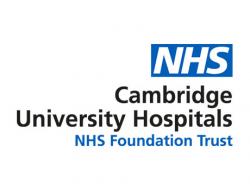
- Paediatrics
- Trials closed
AdDIT
Adolescent Type 1 Diabetes Cardio-Renal Intervention Trial
Research summary
The prognosis for young people diagnosed with T1D during childhood remains poor and this may relate to the higher HbA1c levels encountered during puberty. MA identifies subjects at risk for DN and CVD and it is often observed in adolescent subjects but it is rarely treated before the age of 18 years because, at the end of puberty rates of albumin excretion decline and, in some subjects, it will return into the normal range. However, evidence indicates that subjects with “transient” and “persistent MA” have experienced renal and general endothelial damage during puberty and renoprotection to prevent long-term complications is warranted. In adults, the use of ACEI and Statins is increasing and in order to determine whether these agents are of value in the adolescent population, we need to carry out a pragmatic clinical trial. The major endpoint of such a study would be a change in albumin excretion but secondary endpoints should include markers of CVD, renal function, retinopathy, quality of life combined with detailed assessment of compliance and likely health economic benefits.
The primary endpoint is defined as the area under the curve over time of log ACR per year, with standardisation for gender, age and duration of disease. Subjects will be recruited from a pre-screened population of 3,000 young people with T1D aged 10 to 16 years based on assessment of risk for future CVD and DN. They will be randomised to a 2 x 2 factorial design contrasting the effects of ACEI, statins, or combination therapy to placebo over a maximum four year treatment period. Minimisation of variation in albumin excretion rate, gender, age, diabetes duration, HbA1c, total cholesterol and centre site will be undertaken at randomisation. Analysis of the primary endpoint, change in albumin excretion will be undertaken on an intention to treat basis. Secondary analyses will be undertaken on the basis of ‘as treated’ allowing for variance in compliance and allowing for subjects who show substantial change in HbA1c levels. Additional analyses will be undertaken to assess changes in the secondary objectives and to assess the overall effect of the intervention on quality of life and health economics.
Main inclusion criteria
-
Age 10 to 16 years.
-
T1D diagnosed for more than 1 year or C-peptide negative
-
Centralised assessment of ACR based on six early morning urines deemed to be in upper tertile for risk after adjustment for age, gender, age at diagnosis and duration of disease
Main exclusion criteria
The presence of any of the following will preclude patient inclusion:
-
Non T1D, i.e. type 2 diabetes, insulin dependent diabetes related to monogenic disease, secondary diabetes.
-
ACR based on six early morning urines deemed to be at low risk for subsequent development of CVD or DN.
-
Pregnancy or unwillingness to comply with contraceptive advice and regular pregnancy testing throughout the trial.
-
Breast feeding
-
Severe hyperlipidaemia and family history data to support diagnosis of familial hypercholesterolaemia.
-
Established hypertension unrelated to DN.
-
Prior exposure to the investigational products, statins and ACEI
-
Unwillingness/inability to comply with the study protocol.
-
Other co-morbidities considered unsuitable by the investigator (excluding treated hypothyroidism and coeliac disease)
-
Proliferative retinopathy.
-
Renal disease not associated with Type 1 Diabetes.





